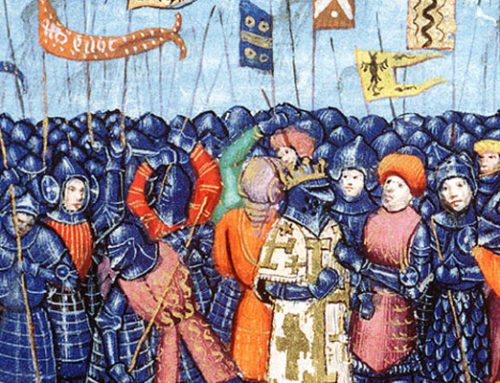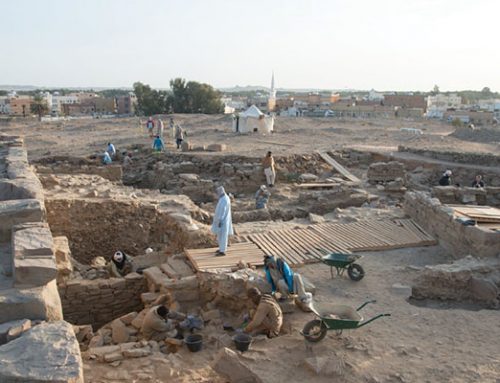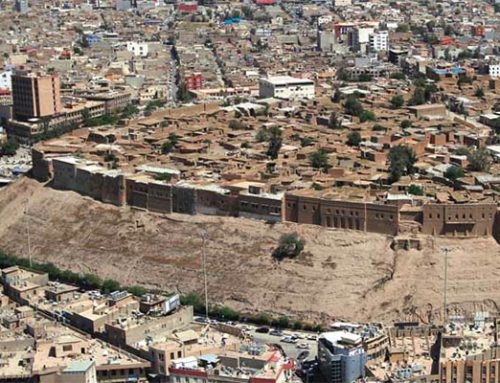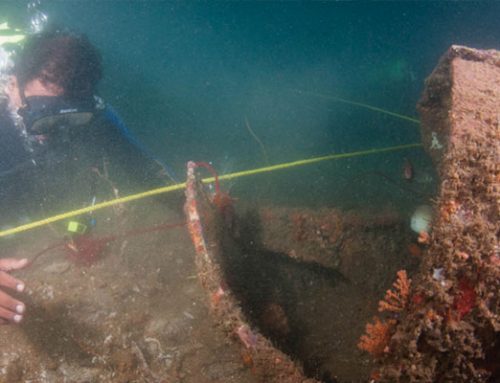The rush to document thousands of ancient texts before they are sent back to Iran, or sold, reveals the daily workings of the Persian empire
 |
| The palace of Darius and the large audience hall in the royal city of Persepolis (above). Tens of thousands of clay tablets and fragments (right) from Persepolis are written in cuneiform to express Elamite, an ancient language of western Iran. |
Tensions between iran and the United States have rarely run higher, with both governments sparring over alleged terror plots, disputing the nature of Iran’s nuclear program, and vying to influence the uprisings across the Arab world. But in Chicago and Boston courtrooms, the two countries have found rare common ground—neither wants ancient tablets from the royal palace of Persepolis in Iran to end up on the auction block. To the relief of scholars, two recent court rulings may give them their joint wish, preserving open access to what is the most significant source of information on the ancient Persian Empire uncovered to date.
In the early 1930s, during excavations of Persepolis, University of Chicago archaeologist Ernst Herzfeld unearthed tens of thousands of fragments of fragile clay tablets dating from about 500 b.c. The fragments were packed into 2,353 cardboard boxes and shipped to the university’s Oriental Institute. The Iranian government of the day allowed the export, with the understanding that the tablets would be translated and then returned. But the task of piecing together and understanding the vast number of fragments has been under way for more than seven decades and the majority of the collection remains in Chicago. Now, fearing loss of the archive, the university has moved into high gear to create thousands of digital images of the tablets, which record the day-to-day accounts of the empire during the reign of Darius the Great (521–486 b.c.) and include records of those traveling on behalf of the king, lists of workers’ rations, and careful notation of offerings made to deities.
 Researchers hope to have most of this intensive effort completed within the next two years. To get the job done, the institute has assembled what Gil Stein, director of the Oriental Institute, calls a “dream team” of textual scholars, archaeologists, and technical experts in digital cataloguing to take images of the tablets and make them available for public use. Translations are also being done, though it will take much longer to complete that daunting task. “Whether they are seized for sale or the government of Iran demands them back, the tablets will be out of the building soon. We all understand how important and urgent this is,” says Stein.
Researchers hope to have most of this intensive effort completed within the next two years. To get the job done, the institute has assembled what Gil Stein, director of the Oriental Institute, calls a “dream team” of textual scholars, archaeologists, and technical experts in digital cataloguing to take images of the tablets and make them available for public use. Translations are also being done, though it will take much longer to complete that daunting task. “Whether they are seized for sale or the government of Iran demands them back, the tablets will be out of the building soon. We all understand how important and urgent this is,” says Stein.
 |
| The front of this tablet (top) is inscribed in Elamite, while the back (left) has an impression that identifies the seal’s original owner as “Cyrus, son of Teipses, an Azanite.” Some scholars believe he was the grandfather of Cyrus the Great, who ruled the Persian Empire before Darius. |
The sudden rush stems from a long-running legal battle involving not just the University of Chicago, but also Harvard University and the Museum of Fine Arts (MFA) in Boston. The trouble began in2004, when Stein returned 300 translated tablets to Tehran in an effort to build trust with Iranian museum officials and scholars. Media reports of that visit caught the atten-tion of David Strachman, a lawyer for a group of Americans suing the Iranian government. They sought damages from a 1997 bombing in Jerusalem that killed five U.S. tourists and wounded dozens more. The Palestinian orga-nization Hamas, which has ties to Iran, had claimed responsibility, so the plaintiffs filed suit against Iran. In 2003, a U.S. federal court awarded them $423.5 million in damages, including $300 million in punitive damages. When the defendant, the Islamic Republic of Iran, ignored the ruling, the lawyers sought out Iranian assets on U.S. soil. Strachman set his sights on other tablets from Persepolis and on Iranian artifacts at Harvard and the MFA that could be worth millions of dollars if sold on the antiquities market.
 Two bitter, expensive, and complicated legal battles ensued, pitting the plaintiffs against Chicago, and against Harvard and the MFA, and forcing the reluctant Iranian and U.S. governments to become involved. In March 2011, a U.S. court of appeals in Chicago rejected the plaintiffs’ request to seize and sell the Chicago tablets, noting that the Foreign Sovereign Immunities Act of 1976 protects foreign assets, except those used for commercial purposes. Strachman argued that the tablets were commercial property, but the court disagreed. It also said that the university could ask for immunity on Iran’s behalf. A lower court had sided with the plaintiffs, and Iran had hired a lawyer to argue for protection. When former Iranian President Mohammad Khatami met with the Oriental Institute’s Stein in 2006 to discuss the situation, Khatami argued that the tablets “do not belong to governments but to the Iranian nation and the world.” The U.S. Department of Justice sided with the Iranians, and the Department of State twice filed briefs backing the position of Chicago and the Iranian government.
Two bitter, expensive, and complicated legal battles ensued, pitting the plaintiffs against Chicago, and against Harvard and the MFA, and forcing the reluctant Iranian and U.S. governments to become involved. In March 2011, a U.S. court of appeals in Chicago rejected the plaintiffs’ request to seize and sell the Chicago tablets, noting that the Foreign Sovereign Immunities Act of 1976 protects foreign assets, except those used for commercial purposes. Strachman argued that the tablets were commercial property, but the court disagreed. It also said that the university could ask for immunity on Iran’s behalf. A lower court had sided with the plaintiffs, and Iran had hired a lawyer to argue for protection. When former Iranian President Mohammad Khatami met with the Oriental Institute’s Stein in 2006 to discuss the situation, Khatami argued that the tablets “do not belong to governments but to the Iranian nation and the world.” The U.S. Department of Justice sided with the Iranians, and the Department of State twice filed briefs backing the position of Chicago and the Iranian government.
Patty Gerstenblith, a legal expert at DePaul University, predicts that Strachman’s clients may ask the U.S. Supreme Court to take the case. In an email, Strachman said that he preferred to decline comment on the litigation. A 2002 U.S. law that punishes terrorists might yet give the suit new life, adds Gerstenblith. For now, Stein says he’s relieved that the long and arduous discovery phase, when the plaintiffs requested reams of documents from Chicago, is over. “We went to hell and back trying to find all the stuff,” he recalls.
 |
| Some tablets were written in different scripts to express languages other than Elamite, including the Semitic language Aramaic (right) and Greek (below). |
Meanwhile, in September 2011, in a separate case in Boston, a federal judge blocked the same plaintiffs from claiming the two other collections of tablets and artifacts. Harvard and the MFA had argued that they own the objects, not Iran, while the plaintiffs had argued they were taken illegally out of the country and therefore are still the property of the Iranian government. The court ruled that the collections belong to the institutions, not to Iran.
 Though the immediate threat of seizure has passed, Stein worries that the conclusion of the suit in favor of the Oriental Institute could prompt Iran to demand the tablets be returned before another legal challenge surfaces. The threat of losing them, either through sale or return to Iran, has galvanized outside groups—among them, the Mellon Foundation, the National Endowment for the Humanities, and the Parsa Foundation—to contribute $3 million to the Persepolis Fortification Archive Project (PFAP), named for the rooms of the city’s fortification wall where the tablets were found. Although broken into thousands of fragments, the tablets may have survived thanks to the collapse of the building that housed them, likely whenAlexander the Great burned the royal compound in 330 b.c.
Though the immediate threat of seizure has passed, Stein worries that the conclusion of the suit in favor of the Oriental Institute could prompt Iran to demand the tablets be returned before another legal challenge surfaces. The threat of losing them, either through sale or return to Iran, has galvanized outside groups—among them, the Mellon Foundation, the National Endowment for the Humanities, and the Parsa Foundation—to contribute $3 million to the Persepolis Fortification Archive Project (PFAP), named for the rooms of the city’s fortification wall where the tablets were found. Although broken into thousands of fragments, the tablets may have survived thanks to the collapse of the building that housed them, likely whenAlexander the Great burned the royal compound in 330 b.c.
 |
| The Elamite text of this tablet (above) records an order from a high-level official named Farnaka, who was in charge of the central administration. |
For scholars of the ancient Near East, Chicago’s PFAP is providing new insights into the vast empire that ruled the area from Egypt to India in the fifth and fourth centuries b.c., but that has mainly been known through ancient Greek sources and a few more recent archaeological digs. The archive contains an impressive record of the Persian Empire’s daily dealings with its subjects during a period of about 15 years beginning in the late sixth century b.c. The texts pose a challenge to the handful of scholars capable of making sense of the records contained in the tablets. In this period, the Semitic tongue Aramaic was the lingua franca across the Middle East, but a host of other tongues and scripts were also used. Most of the tablets use a dialect of Elamite, the ancient language of western Iran, which was inscribed in the Mesopotamian cuneiform script. Others are written in Aramaic, and a small number are in Greek, Phrygian, and Old Persian. The latter find has been particularly surprising. Scholars long believed that Old Persian was only used for monumental purposes, not for practical accounting. This find may indicate that this script was more versatile than once believed. But Matthew Stolper, an Oriental Institute scholar who has led the Chicago “dream team” since they began work in 2002, cautions that other examples are required to make a case for Old Persian as a widespread writing system.
 Many of the tablets were shipped to Persepolis from regional centers where they were carefully transcribed, sorted, and stored. This is exploding an old myth—held by both ancient Babylonians and modern scholars—that the Persian rulers were barbarians civilized by their subjects. Instead, there was a homegrown and capable bureaucracy. Another mistaken belief the tablets expose is that, following a decree of Cyrus the Great, slavery was not permitted in the empire. A text written in Persepolis mentions a slave sale.
Many of the tablets were shipped to Persepolis from regional centers where they were carefully transcribed, sorted, and stored. This is exploding an old myth—held by both ancient Babylonians and modern scholars—that the Persian rulers were barbarians civilized by their subjects. Instead, there was a homegrown and capable bureaucracy. Another mistaken belief the tablets expose is that, following a decree of Cyrus the Great, slavery was not permitted in the empire. A text written in Persepolis mentions a slave sale.
 |
| A relief from the main stairway of the Council Hall depicts armed Persian guards (right). Between 5,000 and 6,000 of the tablets lack text, but include seal impressions on the clay (above). |
Because most of the accounts record the distribution of grain, flour, sheep, goats, wine, and beer, the kind of day-to-day accounting that reveals the empire’s internal workings, the tablets provide a look at a cross section of ancient Persian society, from the royal family to workers. are no big narratives here. This is the view from the lunchbox,” says Stolper. The tablets also give insights into religious practices of the day. Scholars still are unclear what role religion played in the early empire of the sixth century b.c. The Persepolis tablets indicate that the court distributed food and wine to priests of the ancient Iranian deity Ahura Mazda, a god who later became the focus of a Persian state religion. But they surprised researchers by showing that offerings were issued to Elamite and Babylonian gods as well. With respect to food distribution, the tablets say that some female workers received larger rations than men of comparable status, although it is not clear why. On the other hand, women with male children received more food than those with girls. There are also innumerable notations of travelers’ expenses paid for by the royal court. “People were moving from Bactria [in today’s Afghanistan] to Sardis [in today’s Turkey],” says Stolper. “This was a polyglot and multiethnic society.”
In their seemingly humdrum details, the Persepolis tablets are both adding new information to our understanding of the Persian Empire and revising long-held notions about the kind of society in which the Persians lived. According to Stolper, “The Persepolis archive has fundamentally changed every aspect of the study of Achaemenid Iranian languages, art, institutions, and history.” Even if the tablets go to auction, he hopes to convince any future owners—or Iranian officials—to wait until the information from each fragment is completely digitized before claiming the artifacts. This will ensure that the archive is available for the future, no matter what course the legal case takes.




